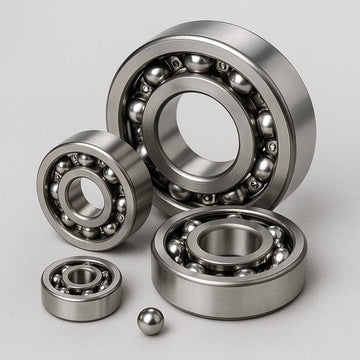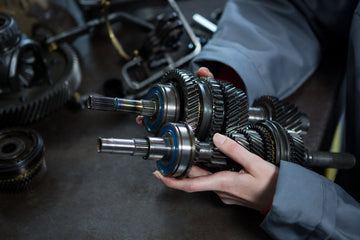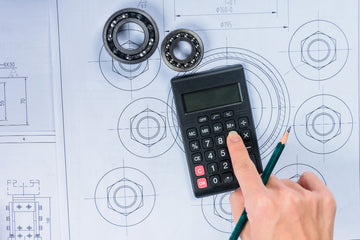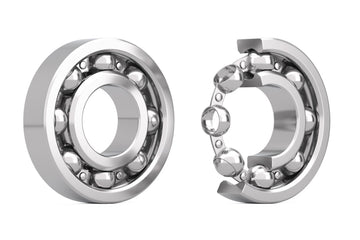In selecting a proper mechanical part in machineries or any industrial use, it is important to know the dimensions of different parts of a ball bearing. These measurements are accurate, and can guarantee efficient functionality, hassle free rotation, and performance. As an engineer, a technician or even an enthusiast, the knowledge of how to read and use sizing of ball bearings can make a huge difference in the efficiency and safety of the project you are working.
What Are Ball Bearing Dimensions?
Ball bearing dimensions are the particular measurements of a ball bearing which determines the size and form of a ball bearing. These normally consist of the inner diameter (ID), external diameter (OD), and width (also termed as the thickness). The three dimensions that are used are to determine the fit of the bearing in the housing and the shaft. It should fit the specification of the machine to which it is fitted so that it can work without causing over usage, out of alignments, or breakages.
Typical bearing sizes may refer to the millimeter (or inch) size, according to local custom, or industry standard. Since manufacturers use uniform codes such as ISO and ABEC to label bearing, it is convenient to compare the dimensions of bearings with different brands.
The Importance of Choosing the Right Dimensions
Once the proper dimensions of a ball bearing are used it is vital in allocating loads, reducing vibration, as well as being long-lived. When the bearing is slack, then the result is instability; when it is tight, then it can cause friction or overheating. The application of high-speed application does not take any slight error in the size of the bearing because it can cause a great problem.
Accuracy in size of ball bearings guarantees ease in the working of mechanical systems. This is quite crucial in automotive, aerospace, robotics, and industrial automation industry, where reliability and precision cannot be compromised in any case.
Interpreting a Ball Bearing Dimensions Chart
The ball bearing dimensions chart is one of the most useful tools used by the professionals. This table contains standard sizes with standard codes, and allows the user to know the proper size bearing they require. A common chart will consist of the ID, OD, width and in rare cases load rating or speed rating.
As an example, a 6203 bearing is commonly 17 mm in diameter on the inside; 40 mm on the outside; and 12 mm across. With the help of these codes users find it easy to refer to specific sizes and even order them without getting mixed up. The charts are available in websites of manufacturers, industrial catalogues or in reference books on engineering.
Variations in Ball Bearings Dimensions
Whereas common sized bearings are applied, there are applications which demand custom or non-standard sized ball bearings. When this is the case, then the user might have to seek the manufacturer of a specialized product that would fit his application. Other considerations to be given special attention may be seal types, material of construction, temperature rating and load capacity.
An example is miniature bearings which are applied in situations where space is small and usually need smaller and precise measures. Conversely, large industrial bearings will be found on heavy equipment and can be many inches in diameter and are designed to support extreme loads and conditions.
Guidelines to the Dimension Measurement of Ball Bearings
To measure an old bearing that you may need to find out the dimensions of and then have to measure the same, it is incredibly important that one has the right set of tools; hence, the calipers or the micrometers are a better product. To begin with, the inner diameter is checked to get a view of the size that it can fit into a shaft. Thereafter, gauge the outer diameter and lastly the width. Notate these numbers down and compare them with a good chart of the ball bearing dimensions in order to identify the right replacement.
It is also worth thinking that pre-used bearings might have small wear, and it might create inaccurate measurements. As a rule, entering the world of doubts, it is preferable to refer to the original equipment manual or ask the representative of a bearing supplier.
Dimensional Series Standards to Consider
Shopping industry-standard bearings, however, it is easy to encounter numbered series, such as 6000, 6200 and 6300, each of which has a different dimensional benefit to the various application tasks. These series are commonly applied in the electric motors, industrial machines, and heavy-load equipment. Learn more on the detailed specifications in the page of bearmax of 6000, 6200 and 6300 series ball bearing.
How Accurate Dimensions Ball Bearing Performance
The correct ball bearing measurement is the recipe of good machinery and flawless mechanical operation. A perfect fit of the parts involved decreases vibration, rotational efficiency, and wear when all components are exactly the right size. In building any precision instrument or servicing and maintaining any industrial equipment, it is essential that the choice of dimensions of ball bearings be appropriate, and only such a ball bearing dimensions chart would enable one to make the right choices related to dimensions and thus guarantee performance over long periods and safety of operation.





